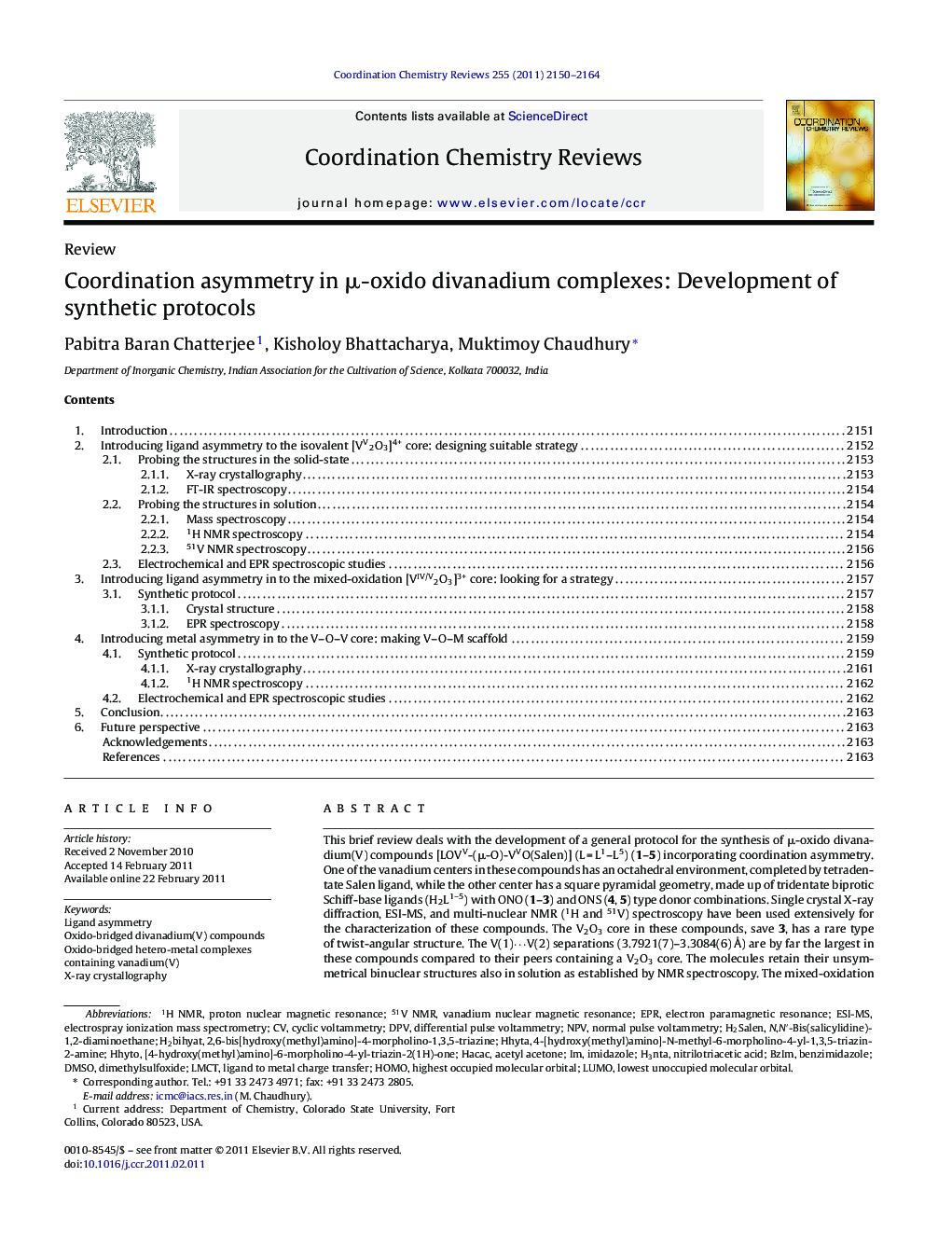| Article ID | Journal | Published Year | Pages | File Type |
|---|---|---|---|---|
| 1299209 | Coordination Chemistry Reviews | 2011 | 15 Pages |
This brief review deals with the development of a general protocol for the synthesis of μ-oxido divanadium(V) compounds [LOVV-(μ-O)-VVO(Salen)] (L = L1–L5) (1–5) incorporating coordination asymmetry. One of the vanadium centers in these compounds has an octahedral environment, completed by tetradentate Salen ligand, while the other center has a square pyramidal geometry, made up of tridentate biprotic Schiff-base ligands (H2L1–5) with ONO (1–3) and ONS (4, 5) type donor combinations. Single crystal X-ray diffraction, ESI-MS, and multi-nuclear NMR (1H and 51V) spectroscopy have been used extensively for the characterization of these compounds. The V2O3 core in these compounds, save 3, has a rare type of twist-angular structure. The V(1)⋯V(2) separations (3.7921(7)–3.3084(6) Å) are by far the largest in these compounds compared to their peers containing a V2O3 core. The molecules retain their unsymmetrical binuclear structures also in solution as established by NMR spectroscopy. The mixed-oxidation compound (ImH)[L4OVIV-(μ-O)-VVOL5] 7 containing two dissimilar ligands has a V2O3 core with a syn-angular structure and exhibits crystallographically imposed mirror symmetry due to static disorder. In solution of donor solvents, this angular core structure changes into a linear one (anti-linear) by accepting solvents in to the vacant coordination site of the metal centers. Finally, the protocol for the synthesis of heterobimetallic compounds with vanadium(V) and Re(VII) combination flanked by a single μ-oxido bridge has been developed in which the precursor complexes [VIVOL6,7] (H2L6,7 are Salen type of ligands) are allowed to oxidize aerially in the presence of added perrhenate anion. The oxidized [VVOL6,7]+ species hold the ReO4− anion in the vacant coordination site of the metal ion, trans to the terminal oxido group, thus generating the VV–O–ReVII moiety in the heterobimetallic compounds (9 and 10). Both X-ray crystallography and 1H NMR spectroscopy have been used to establish the identities of these compounds. In compound 9, the Re(1)–O(11)–V(1) bridge angle is barely linear (170.2(3)°) with a Re⋯V separation of 3.9647(9) Å. The redox behavior of 9 and 10 are quite interesting, each undergoing two reductions both in the positive potential range at E1/2 = 0.59 and 0.16 V vs. Ag/AgCl reference and have single-electron stoichiometry, confirmed by constant potential coulometry.
